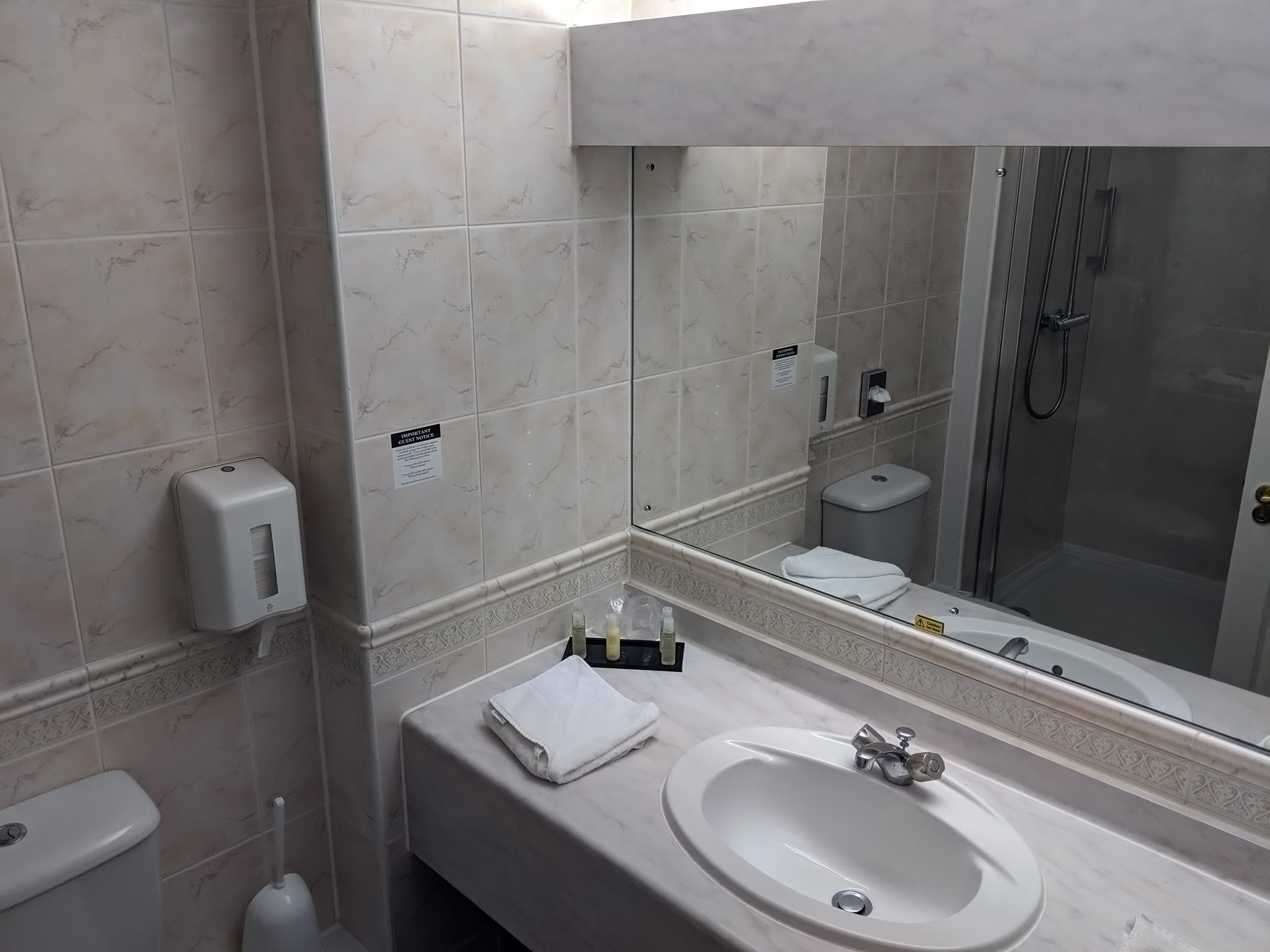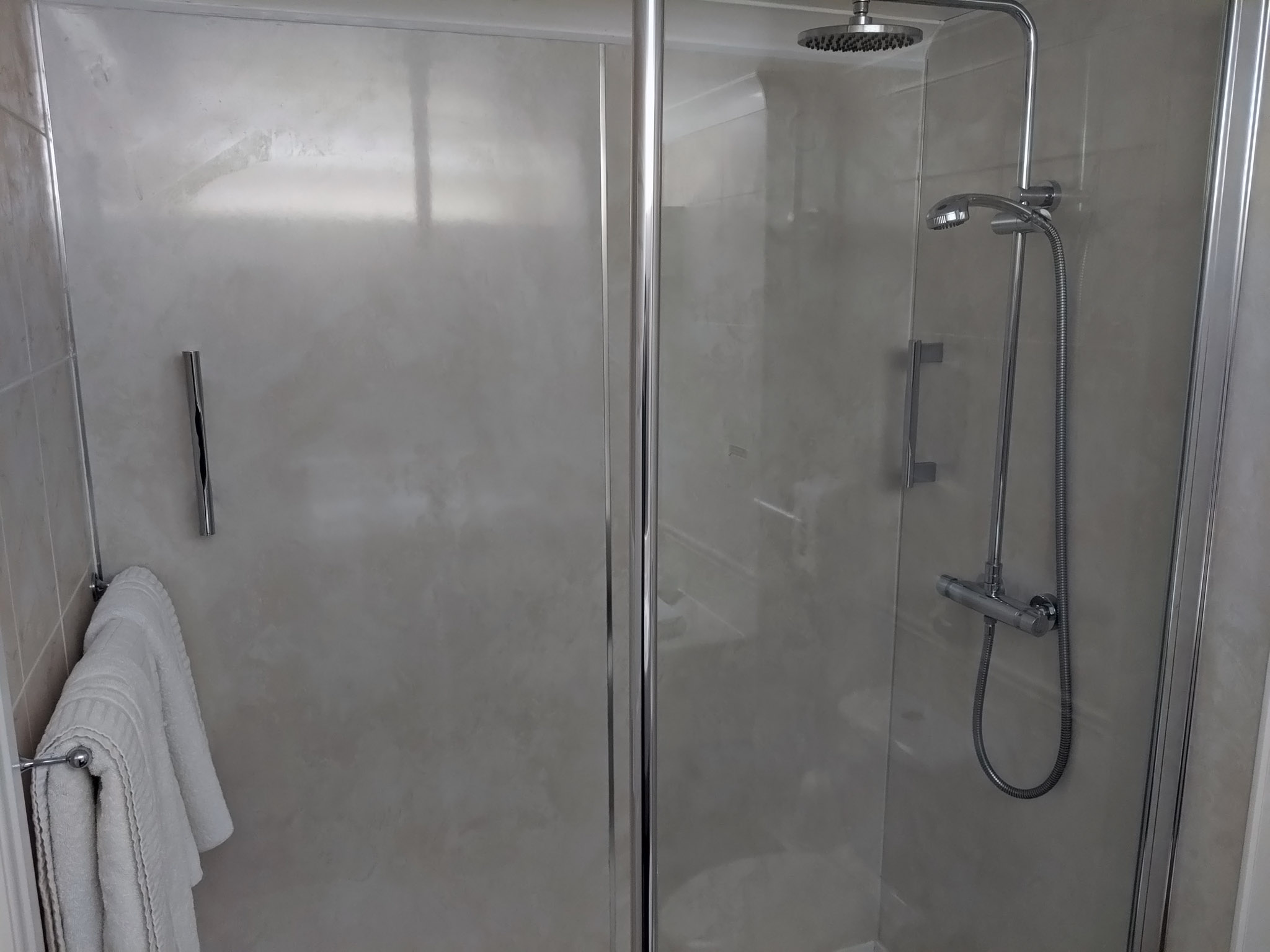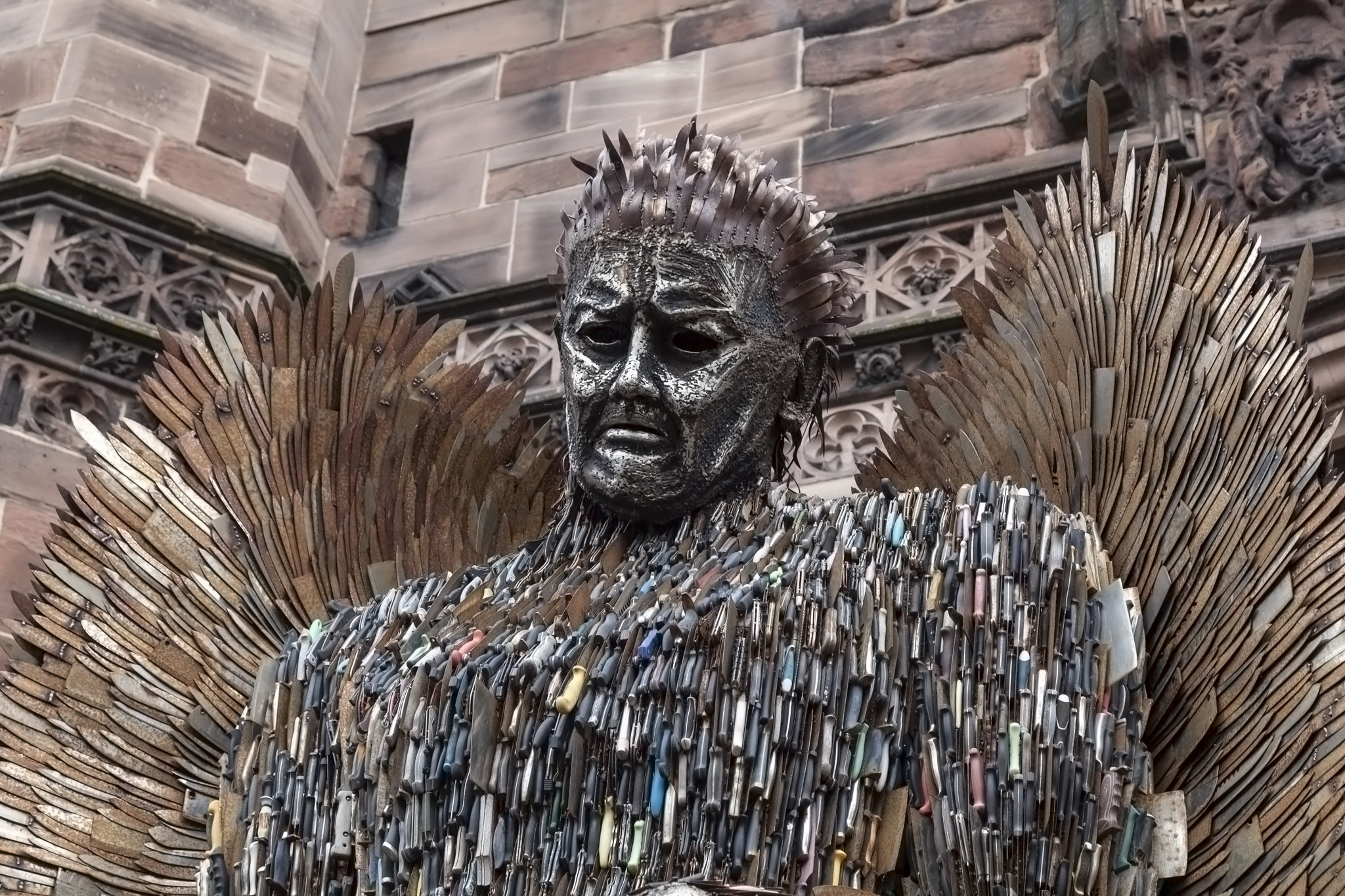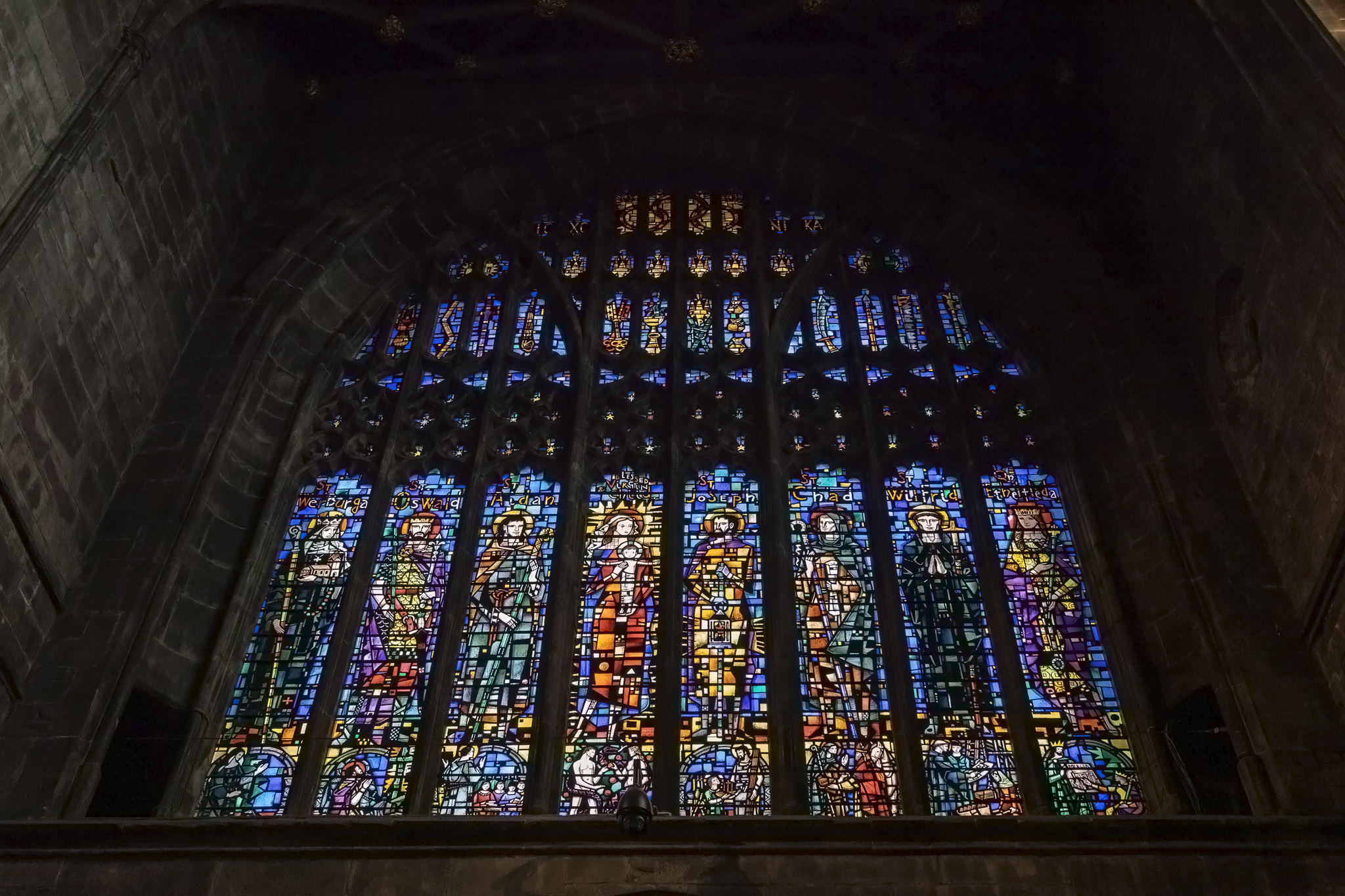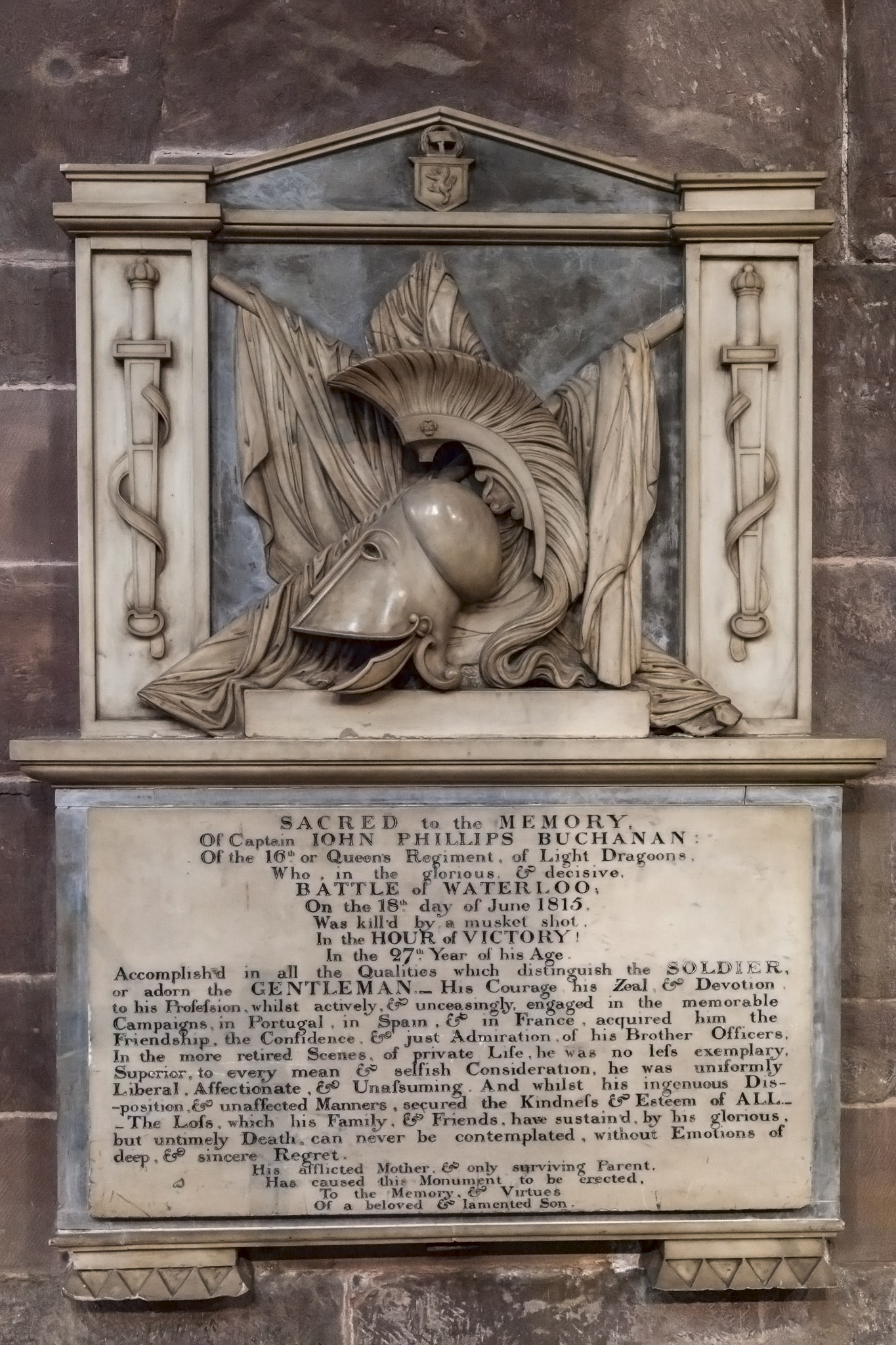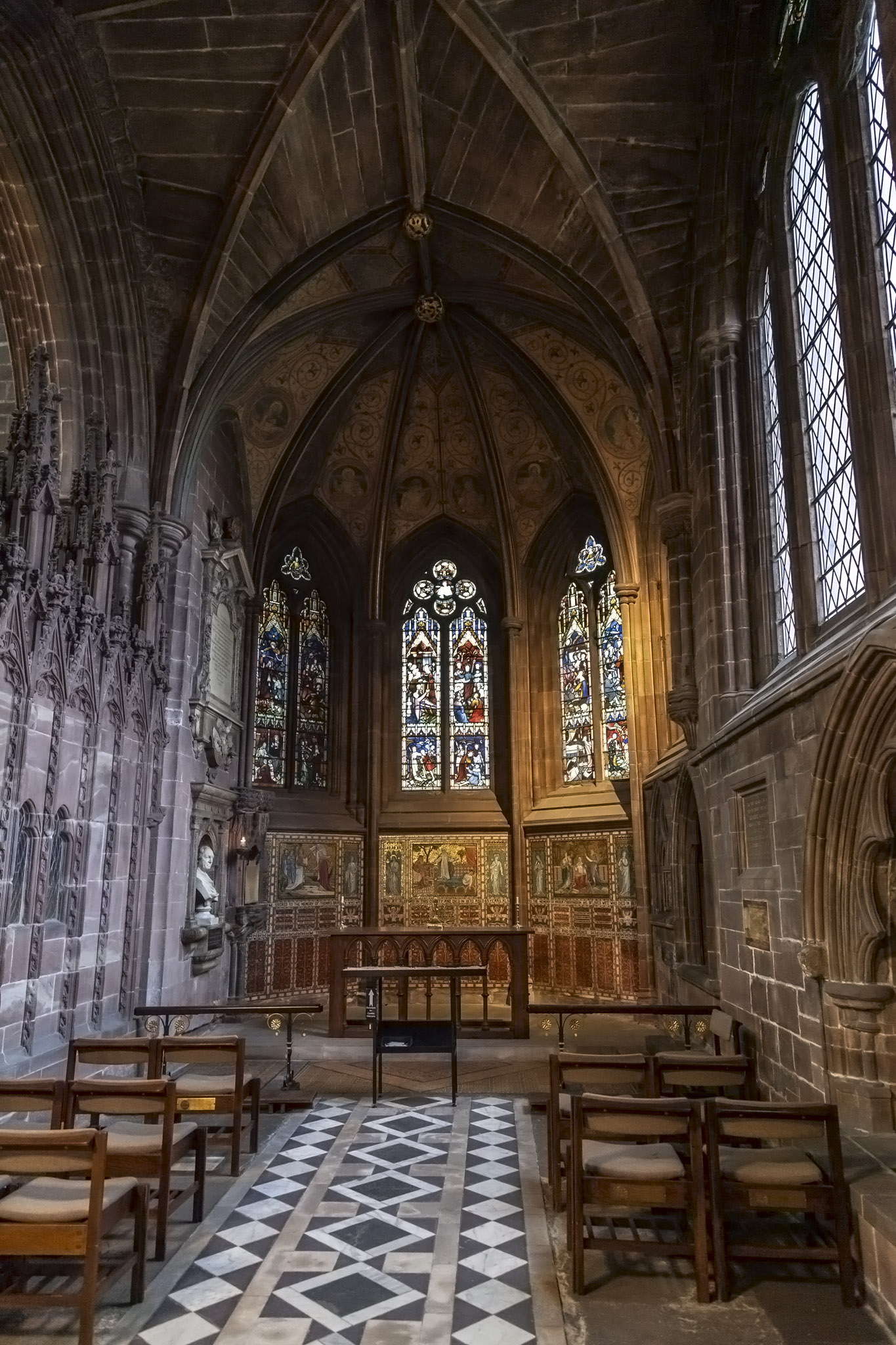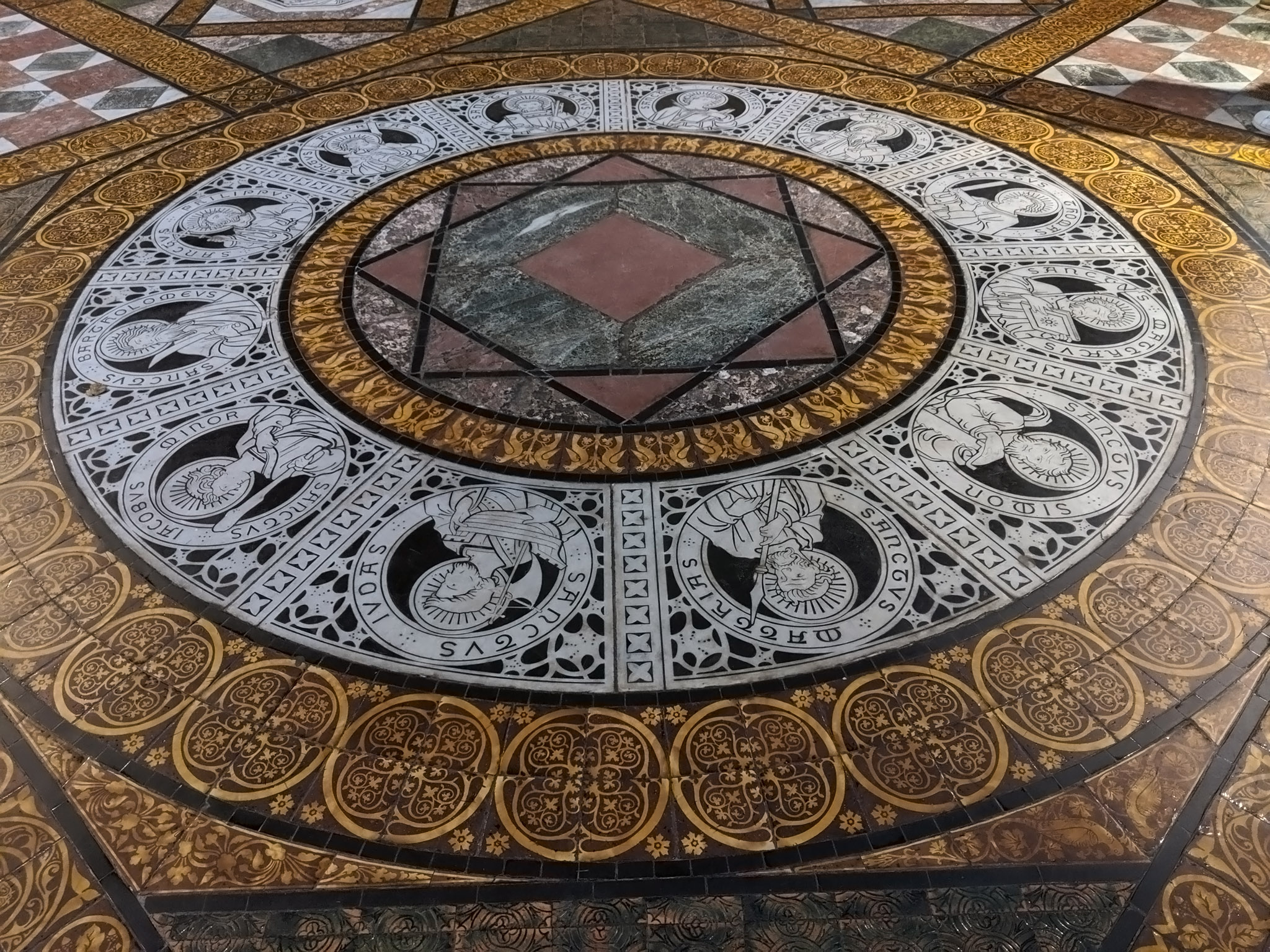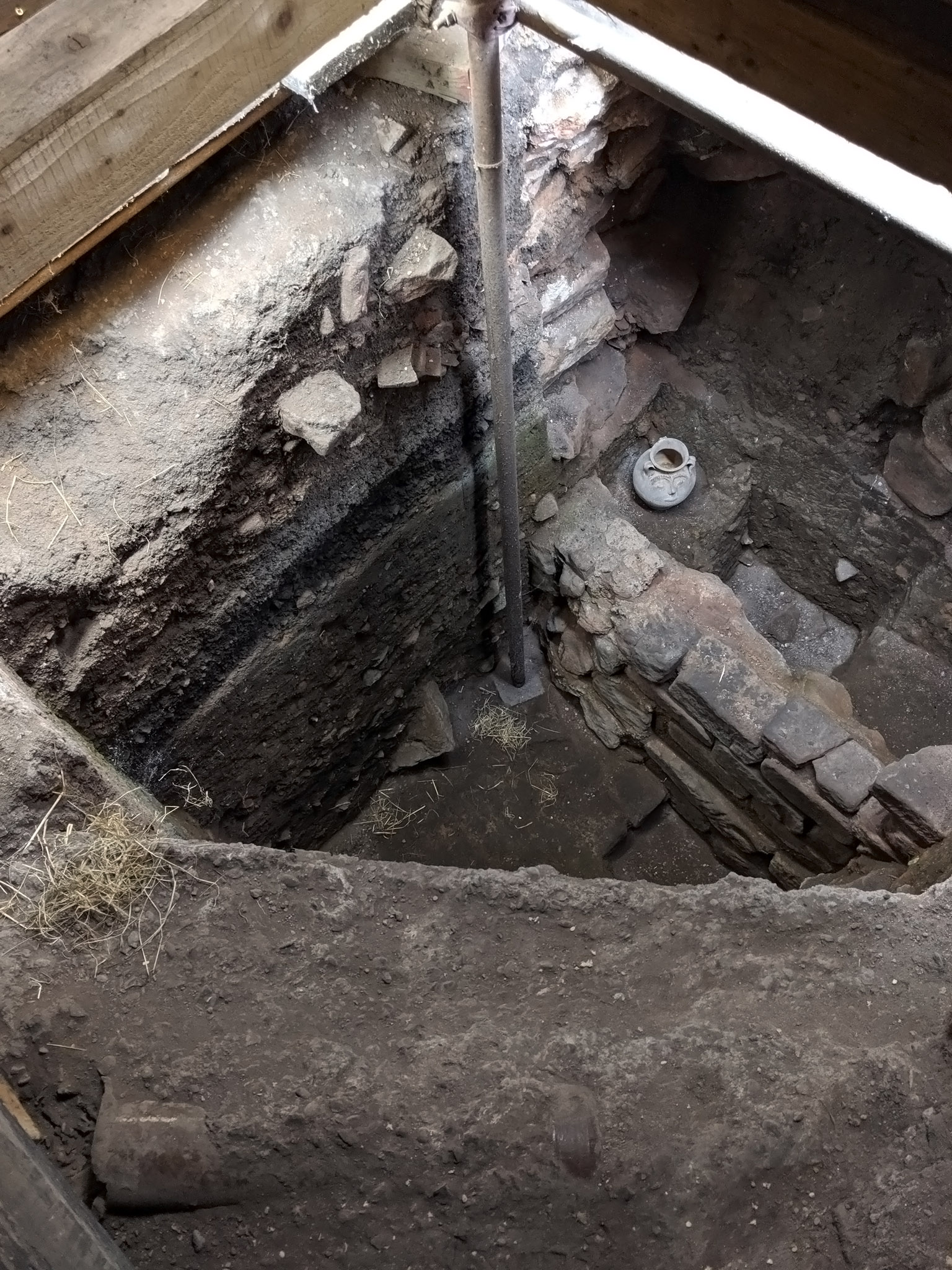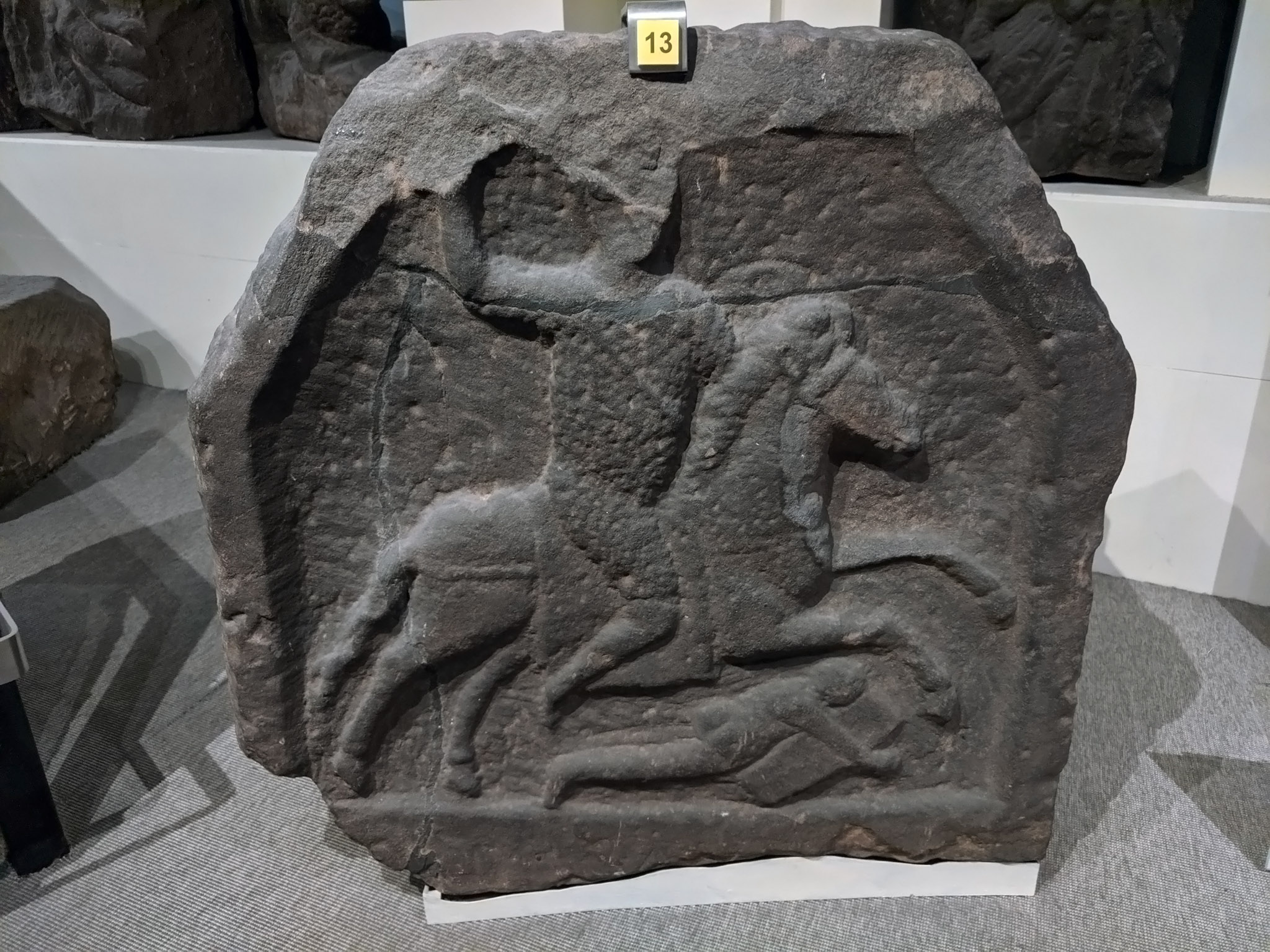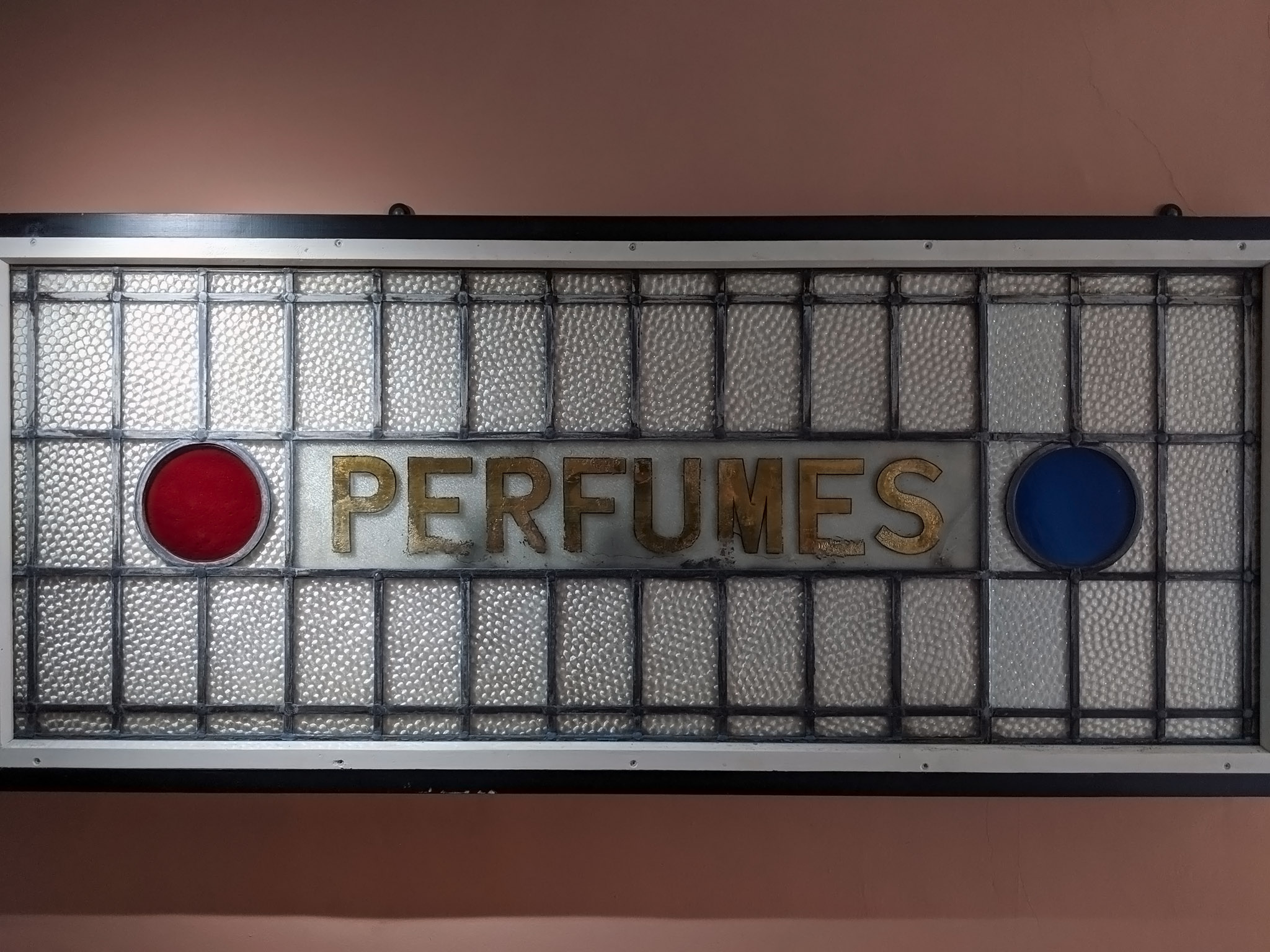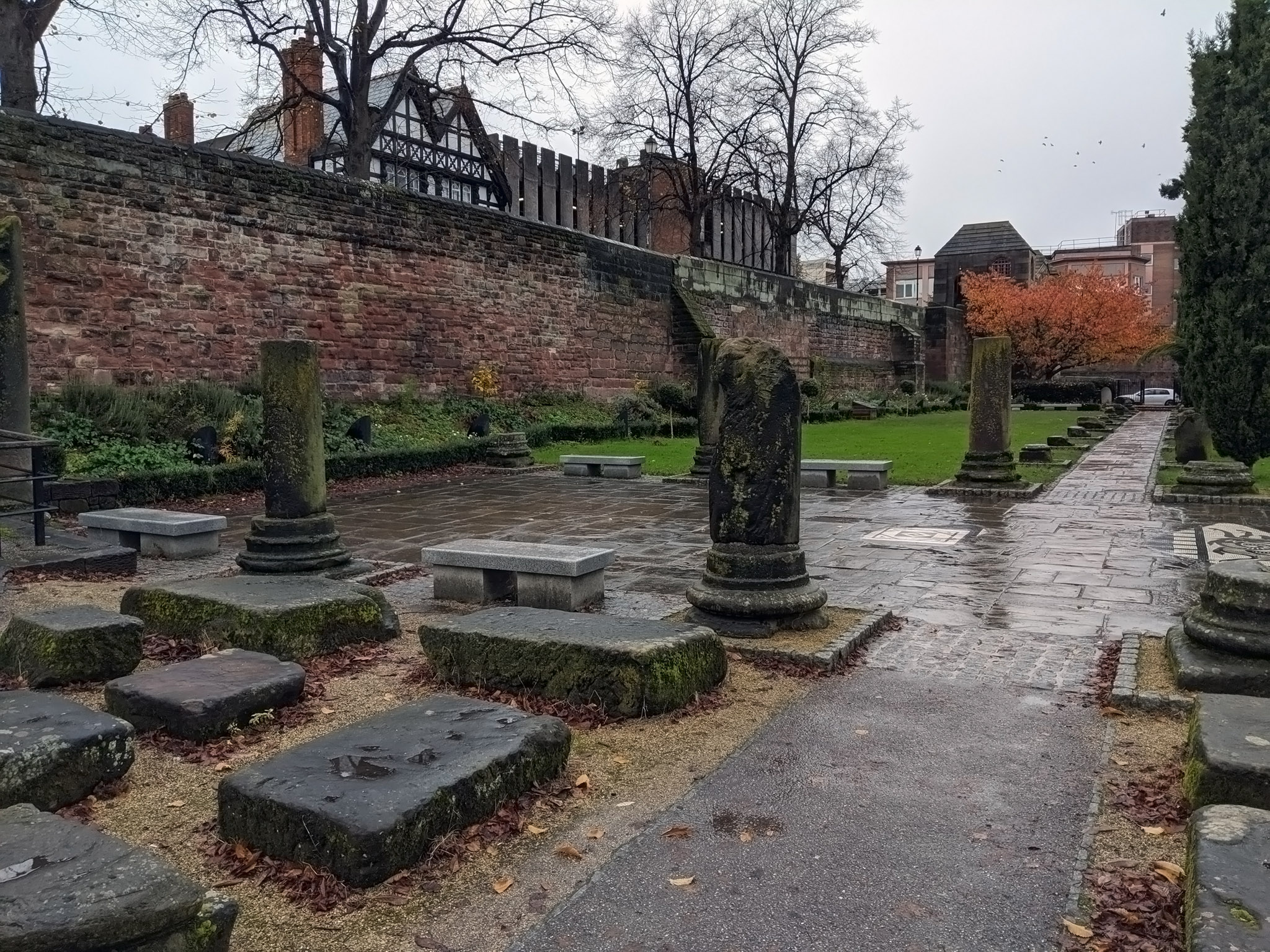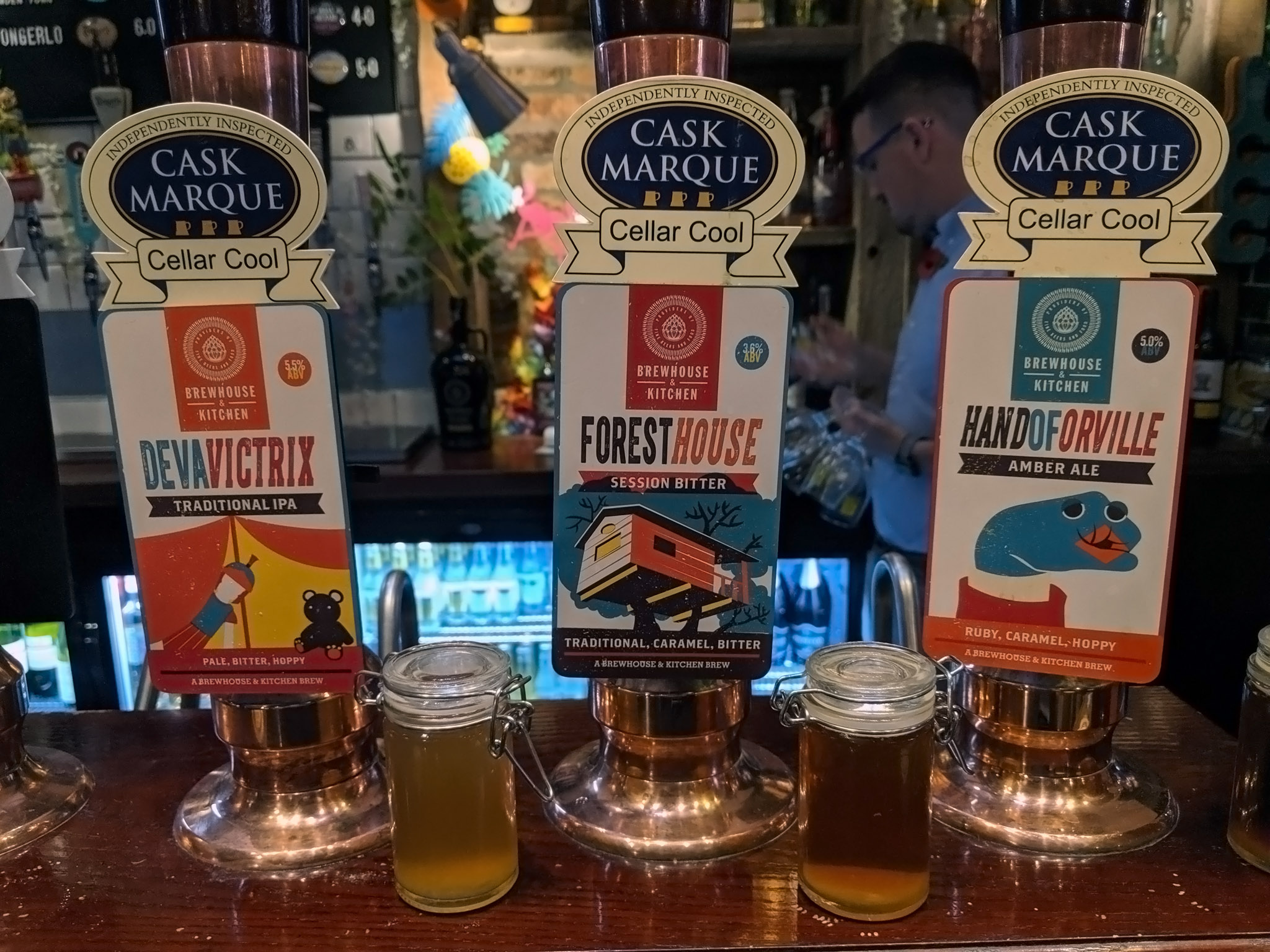This post covers a short visit – around 36 hours in total – to the city of Chester in Cheshire in November 2019. The reason for this short stay in the city was that at the end of our Marella Discovery cruise to Jordan we flew back into Manchester in the evening and not wanting to follow that up with a five or six hour drive back to the south coast and home we made arrangements to have two nights in Chester. I’ll gloss over the terror at Manchester Airport where we forgot where we’d parked the car and skip straight to the evening and the following day’s destination.
The hotel we’d booked was the Mill Hotel & Spa situated on both sides of the Shropshire Union Canal which passes through Chester. Driving into Chester from the motorway was simple and mostly a case of going straight on at every turn; the final few roads to get to Mill Hotel proved to be a painful maze of one-way roads that saw us circling the place twice before finding ourselves outside it and then discovering there were no parking spaces anywhere to be seen. I left my wife in the car while it was parked on double yellows and wandered into the reception to ask if they had any idea where we could park and a helpful person there then unlocked a private parking area for us.
Our room in Mill Hotel was on the south side of the canal, reached by a covered walkway over it from the main hotel building, and there are some obligatory photos below. It was a perfectly fine place to stay, convenient for a walk around Cheshire, and the hotel bar had a fantastic range of ales available.
The first evening was just a wander into Chester to get a sense of where things were. If you’re visiting Chester then you are required by law to take a photograph of the Eastgate Clock, reputedly the second most-photographed clock in the country after Big Ben. This clock was added to the Eastgate, the original entrance to the Roman fortress that once stood on the spot, to celebrate Queen Victoria’s diamond jubilee.
This was a Friday night in November in the north of England so it was, naturally, raining and bitterly cold, especially compared to the soaring temperatures we’d only just experienced on our cruise through the Suez Canal and exploration of the ancient city of Petra. Chester was not busy but the people out were remarkably noisy. We liked the number and variety of pubs and bars that we could see but decided to head a little away from the more raucous centre to seek some shelter, a little peace, and to sample some real ales and ciders. The Brewery Tap on Lower Bridge Street did not disappoint us and we would end up returning to it on the following evening too. For this first night in Chester we made do with a couple of drinks and some crisps from the bar because we weren’t in the mood for anything more.
We had a very simple plan for our one day in Chester and that was to explore some of its historical sites for the morning and early afternoon then hit some of those bars that had caught our eyes on the evening’s reconnoitre.
We’d chosen Chester as the place to stay and break up our return trip to Portsmouth because of its Roman history in the main. The fort that was originally erected where the city now stands was called Deva and was built in around 79 CE by a legion comprising mainly Roman marines. Deva was occupied by the military for around four centuries until the Romans departed Britain but the strong defences were used by civilians to protect themselves from raiders and a town then city grew up around it. The city was strengthened and expanded further by the Saxons and it was one of the last places to fall to the Norman conquest of the eleventh century. These days Chester is well-known for its city walls, which are almost complete, and for its medieval buildings, although many are Victorian restorations and reconstructions.
After a very good breakfast in the hotel we headed back into the city, accompanied by a persistent drizzle. The first place we made for, in the hope that after we’d visited it the rain might have eased off, was Chester Cathedral. As fans of art and unusual scupltures we were pleased to see that the entrance to the cathedral had attracted a small crowd of tourists around what we discovered was the Knife Angel. Also known as the National Monument Against Violence & Aggression, this eight-metre-tall sculpture was made by Alfie Bradley from knives used in crimes and handed in during amnesties to highlight knife crime, and it tours the country to do so. Its potential for a future Doctor Who enemy was discussed.
Chester Cathedral doesn’t have a specific creation date, being one of those buildings that has been erected, deconstructed, amended, and extended over the course of several centuries, although a Benedictine abbey was founded on the spot in the late eleventh century. The vaulted ceiling was particularly nice and the unusually wide south transept helped to increase the perception of interior space in the church against the dark sandstone brickwork.
The south transept was also the location of a cenotaph for the nineteenth century MP for Chester, Hugh Lupus Grosvenor, easily noticed by the sleeping dog at the foot of the sculpture. Grosvenor was a very wealthy man thanks to his interest in managing estates and horse racing, and probably needed to be in order to support his family. Over two marriages – one to his younger first cousin, another to a baron’s daughter thirty years his junior – he fathered fifteen children.
Off the north transept were the cloisters with some twentieth century stained glass windows depicting 130 saints. The small garth outside featured a prominent bronze sculpture by Stephen Broadbent called The Water of Life.
If you do pay a visit to Chester Cathedral then take some time to read some of the case notes on display in my favourite part of the building, the Consistory Court. The court was established in 1541 and until the nineteenth century covered moral and religious conduct of clergy and laity, building maintenance matters, and tithe, probate, and matrimony issues.
A light, cold rain continued to fall once we’d finished looking around the cathedral so we made our way the short distance to the Grosvenor Museum next. As you’ll probably already have guessed, the museum is named after Hugh Lupus Grosvenor once more who donated part of the site. Grosvenor Museum was built in 1885. The first floor was given over to art displays, some of them very interesting indeed, while the ground floor was dedicated to the Roman history of Chester. A conventional museum layout also featured a room containing a collection of Roman tombstones.
At the rear of the museum, through a connecting area complete with small souvenir shop and toilets, there was Number 20 Castle Street. This is a house with rooms decorated and furnished in period styles from 1680 to 1925 and is definitely worth a look. With our visit taking place not too long after halloween some of the rooms featured scary additions such as fake spiders and cobwebs.
The rain had relented by the time we’d finished exploring Grosvenor Museum and its period house so we took advantage of this time to seek out a couple of Chester’s most famous landmarks: the castle and the walls. The original castle was built during William the Conqueror‘s reign and would have been a motte-and-bailey construction. A stone building wouldn’t appear on the spot until the following century, and subsequent centuries saw changes in accordance with the times including an outer bailey and moat appearing, neoclassical design elements, gun emplacements, etc.
Chester Castle sounded like it had all the sorts of things we like to see. And we’d have liked to see them on this day too but we apparently approached the tourist spot from the wrong direction, couldn’t work out how to get in, and in the process of walking along part of the city walls decided we’d just carry on with our walk instead. The weather played a part in this decision because the wind was biting and blowing in from the River Dee along which we were walking, and the walls which had been subject to a lot of rain and were covered in fallen leaves were proving to be quite slippery. Like the castle, the walls evolved from wooden and earth structures to brick defences following the Norman conquest, but by the late seventeenth century, after the English Civil War, they had become mostly what they are now: a place for people to walk with a historical connection to the past.
We only did the southern stretch of Chester’s city walls as we didn’t want to have survived a hike to the Monastery at Petra a couple of days before only to twist ankles on sloped paving stones in the northwest of England. In addition, we’d spotted something on the map that had caught our eyes. To get to that we needed to pass through the Roman Gardens. These were just outside the walls on the southeast corner and followed the natural gradient of the land leading from the River Dee towards the city centre. The layout of the gardens roughly followed a pattern of snaking paths representing a serpent coiled around a staff and you’ll recognise this shape as the symbol of Asclepius, associated with health in Greek and Roman mythologies. A number of Roman artefacts provided interest in the gardens and the explanations on boards served an educational purpose, and the spot is probably a very pleasant one to sit in during the warmth of summer. We hurried up the slope.
That thing we’d spotted on the map and to which we were heading was the Chester Roman Amphitheatre. We’ve been lucky enough to visit a few amphitheatres on our travels. We’d only just returned from Petra where there is a large one dug into the sandstone. Earlier in the year we’d visited the amphitheatre at Arles in southern France and driven past the Colosseum in Rome, and several years earlier we’d walked around another one in the Spanish city of Tarragona. The amphitheatre in Chester is spectacular for all the wrong reasons.
I… I think this is it.
Where? Where are you looking?
Here. I think we’re in it.
I can’t see any entrance.
No, I don’t think there’s an entrance. I think this may actually be the amphitheatre.
This is dirt and a not particularly straight stone wall.
Yes, I know. I think this means our garden back home might qualify as an amphitheatre too.
It’s not quite as good as the one in Petra. Or Arles. Or Rome. Or Tarragona.
Or that one in Cirencester that we tried to find in the dark but couldn’t. That’s probably more impressive too.
Our garden’s better.
That mostly completed our cultural exploration of Chester. Every part of us was freezing by this point and our two quick disappointments with the castle and the amphitheatre put us more in the mood to seek out somewhere indoors where we could get something warm inside us. We identified a likely candidate on the map and headed in that direction which naturally took us through Grosvenor Park. You’re probably thinking “Ah, that old Hugh Lupus chap again!” but in this instance the park is named for his father, Richard, of whom there is a statue erected in the centre. Of mildly more interest to us were the modern art sculptures of varying degrees of quality.
Our mid-afternoon lunch and alcohol fast-breaking took place in the Chester Brewhouse & Kitchen. We have a couple of the Brewhouse & Kitchen pubs in and around Portsmouth and knew what to expect: on-site-brewed ales and good quality food. We weren’t disappointed by either and ended up staying for a second drink just so I could sample something else from the beer menu.
We decided to hit the shops in the centre of Chester next as we’d spotted an interesting-looking place on our evening’s amble the day before. Turmeaus Whisky appealed for its range of obscure whiskey brands and for the chance to hunt down a bottle of port-finished Finlaggan that we’d sampled in Amsterdam in May of that year. The staff were very knowledgeable about whiskey in general but completely wrong about the Finlaggan we asked about, insisting that they wouldn’t stock that as you could pick it up in the supermarket (you can’t) and that we’d just be able to order it online (you can’t; it was a limited edition run). Nevertheless, we bought a couple of bottles of things we’d never tried before and decided to take them back to the hotel rather than lug them around with us. If you like whiskey and don’t mind the smell of cigars then the shop is worth a look around.
From our hotel room we could see across the canal to the hotel building on the north side and to the river boat that is used as a restaurant. If we were staying in Chester in warmer weather and for a few days then we’d have been very interested in booking a table for the floating, dining experience. Well, you know us and how much we like to be on the water. We decided to have a drink in the hotel bar before returning to the city because the range on offer looked exceptional and it’s another big plus point for the Mill Hotel too.
To finish off our single day’s tour of Chester we engaged in a little bit of hopping around a few of the city’s bars. First up was Craft & Company, very nearly directly above the whiskey shop we’d visited earlier. Impossible to get a phone signal of any kind because of the thick stone walls but that was the only negative. Drinks were gorgeous and the bar staff were friendly.
An aborted attempt to find another place we’d seen on the map drove us back to Watergate Street, not too far from the first bar, and Lono Cove. The tropical stylings looked particularly welcoming on what was now a chilling-to-the-bone evening with the sun having set. With us being nearly the only people in the bar and with the door being wide open it wasn’t quite as warm inside as we’d have liked but we did our best to raise our core temperatures with some of the fantastically-varied cocktails on offer. The drinks here were excellent too and we stayed for a second round after a few more people arrived and the staff shut the entrance door.
We didn’t fancy the idea of wandering the streets too much in search of somewhere with good drinks and available seats (well, we’re getting on a bit and like to sit down) so made the decision to return to the bar we’d hit the night before, the Brewery Tap, as it had seemed just the right level of busy and spacious for a Friday night that we hoped it would be the same on a Saturday. Indeed it was, and we finished the night and our stay in Chester with another couple of very good drinks here. They also did food which we contemplated after seeing fellow patrons tucking in but we ultimately gave it a miss.
We did enjoy Chester and we think we made a good decision to pick it and the hotel we chose as a way to break up the journey down south after our flight. This was our first visit to Chester, though, but we won’t be rushing back for a second.
There’s nothing wrong with Chester at all and it had one thing we really liked: a good number and good variety of drinking establishments serving good drinks. The biggest problem we had was that there was nothing outstanding about it. It had city walls and they were okay but not the best we’ve seen or visited. It had Roman remains and they were okay but not the best again. It had a cathedral which was nice but nothing extraordinary. We’ve been in better museums. We’ve seen better rivers and canals in cities. We didn’t see the castle inside but from its exterior view we knew we’d been in and seen better too. Everything was just okay and nothing was awful (the amphitheatre came close), and maybe that’s just a side-effect of travelling as much as we do. Everyone is different and you might love the place but that’s the reason I tend to write travelogues rather than reviews as the latter might not reflect your experiences in the slightest.


